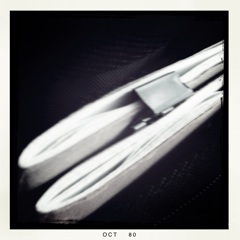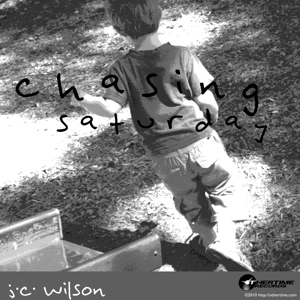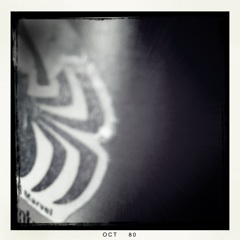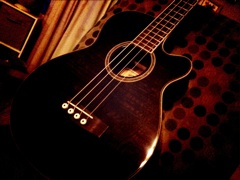I’m preparing a new collection of tunes. It will be release on the first of November. Six tracks. All electronic and strange or solo electric guitar (and still strange). It’s primarily more improvisations and accidents. The nature of how the collection started and why I decided to continue working on it lends itself to a minor (or major) revision of my creative process and how I think about it. Hang tight. This could get thick.
One of the things that I loved about working on large scale works for an ensemble was the planning. There is so much detail that needs tending. Dynamics, articulations, accurate notation. All of the subtleties of orchestration in the service of the thematic material. These things can consume the mind and make it impossible to ever finish a work. I knew people who would revise and revise until it was just so and then start revising again after the very first performance of the work. It’s a tempting place to take up residence, this den of detail. I was on the edge of falling into it when I started working with the NYU New Music Ensemble way back when.
I saw what they did with improvisations over my electronic works. I never wrote anything down but instead communicated what I wanted to hear in the electronic sounds. Every time we did the piece it was different. But there were certain characteristics that never changed. The tone, the tempo, the textures had variations and would have been different had they been transcribed but the listener left with the same impression each time.
It doesn’t sound like a big deal but to me in that time and at that place in my education, it was like a bright shaft of light coming down from an otherwise dark sky. I started working with improvisation in mind from that day on. I stepped away from the paper and pen and most of my work today is improvised. That’s where this collection comes in.

A while back I got a new amp and a loop station. They’re cool and I’m having a lot of fun with them. On my first night with the loop station, I plugged it into my computer and started recording. Good things happened. I was still getting the hang of using it and what I could do with it. Let’s just say that I have no interest in the novelty act deal where you lay down a rhythm track and then cover it with an accompaniment and finally a lead line. That’s a powerful technique and is fun to watch, but I don’t feel like I’m going to create anything cool that way. What I want is the same thing I’ve always wanted: an insanely long delay line that loops back around at an unpredictable moment and forces everything out of balance and then back together again. And let’s just say that’s easier to buy in hardware than to program up in Pure Data.
I did several nights of improvising and found that I had something neat (let this be a lesson, kiddies: record EVERY SESSION!). Then I dove into my notebooks that I keep scribbling in and found some interesting concepts. I applied them. Good things happened. Now I have six pieces that came out of nothing and go together nicely.
What I have learned is that I really prefer working this way. Writing things down in notebooks and enormous, elaborate scores is a lot of fun but that’s fundamentally contrary to how I work. The hardest thing to do is to let go of training and do what comes naturally. Once we learn rules, we want to hold onto them. We want to believe that they are The Way. But we know the way the first time we set out to do something that matters. It’s not perfectly clear but it usually feels right. Obeying that internal directive can be a challenge to the traditions that we have invested so much effort but there’s no arguing with results.



